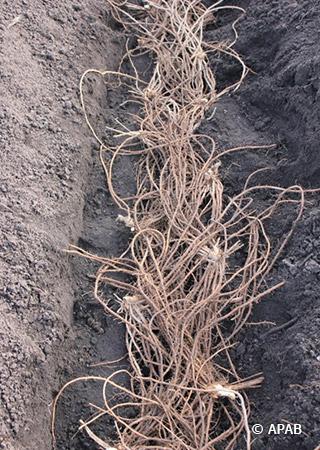
The colour of Asperges du Blayais PGI is defined by the colour of their tips. For white asparagus, the tip is white, whereas for purple asparagus, the tip is pink to purple. The rest of the shoot is always white, and may display a slight pink hue.
Asperges du Blayais PGI asparagus are tender and sweet. The tips melt in the mouth and the stalks have very little stringiness.
Origins

Asperges du Blayais PGI refers to a range of varieties of white or purple asparagus produced in specific municipalities located in the French departments of Gironde and Charente-Maritime. They gained their European Protected Geographical Indication status in 2015.

The Asperges du Blayais PGI asparagus are produced and harvested in southwestern France on the right bank of the Gironde estuary and a little bit further inland including a selection of locations, in what is also known as the Blayais region. The land surrounding the estuary presents the specific natural environment ideal for growing vines on the clayey hills and asparagus in the sandy lowlands. It is thanks to this terroir that this delicate vegetable has developed its refined flavour and characteristics.
The thin skin of the asparagus and the melt-in-the-mouth quality of tips through to the tenderness and sweetness of the whole length of the vegetable are all brought about by the composition of the soil made up of Périgord sands. The soils in which the asparagus are grown are on average over 75 % sand. The sand is black, a sign that it is very rich in organic matter, very fine and warms up quickly.
In addition to this naturally drained and temperate environment, the climate, strongly influenced by the ocean and the nearby Gironde estuary, is an asset. The weather conditions are ideal for the quick growth during the asparagus season, with very mild temperatures from March onwards, and regular precipitation between March and June. The mild climate also favours early cropping and limits the vegetable’s natural bitterness.

Asperges du Blayais PGI’s tender texture nicely complemented by their sweet flavour are encapsulated in the French slogan ‘De la pointe au talon tout est bon!’ (‘Good from top to bottom!’), which has been used for several generations to describe this delicacy. The quality of the Asperges du Blayais PGI asparagus means that their reputation extends far beyond the defined area where they are grown. They are sold not only throughout France, but also in the rest of Europe, China and Japan.
Production
The following carefully selected varieties are used to harvest the Asperges du Blayais PGI asparagus: Andreas, Avalim, Cumulus, Darbella, Dariana, Darlise, Emma, Eposs, Grolim, Gynlim, Herkolim, Obelisk, Orane, Ramada, Rambo, Rapsody, Ravel, Thielim, Vilmorin 26, Vilmorin 31 and Vitalim. New varieties may be introduced, as long as they conform to the high quality standards set for the product.
Nowadays, the cultivation practices of Asperges du Blayais PGI involve systematic hilling, which enables their white colour to be preserved. This may be accompanied by the mulching of the mounds, which optimises the advantages of the climate.

The colour of Asperges du Blayais PGI is defined by the colour of their tips. For white asparagus, the tip is white, whereas for purple asparagus, the tip is pink to purple. The rest of the shoot is always white, and may display a slight pink hue.
Several elements in the appearance of Asperges du Blayais PGI attest to the quality of the product. Firstly, the tips are tightly closed and the shoots are well formed: they are neither hollow, broken nor cracked, and may be gently curved. The length is under 12 cm for asparagus tips, 12 to 17 cm for short asparagus, and above 17 cm for long asparagus. The maximum length is 22 cm. The minimum diameter, measured at the midpoint of the length, is 12 mm.
Sorting ensures that only asparagus of a large size with white shoots and white or purple tips - indicators of tenderness - are selected. Particular care is taken to avoid the risks of desiccation, as well as those inherent in the processes of washing, sorting and regulated-moisture-level chilling, as the tenderness of asparagus depends largely on its freshness and the preservation of its natural moisture. The time between harvesting and chilling must never exceed 10 hours. While awaiting shipping or packaging, the asparagus must be stored in a cold, humid room (humidity level above 80 %, temperature between 2 and 7 °C).

Peeling, by hand or by machine, is optional and takes place after sorting. Asperges du Blayais PGI must be sorted in their production location, contrary to peeling and packaging.
More information
Asperges du Blayais PGI – legal specifications

